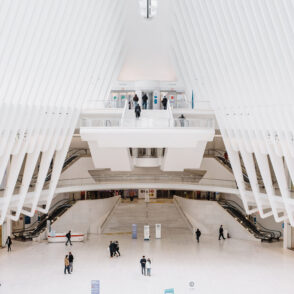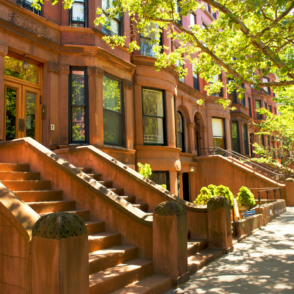We’ve all been there. You’re rubbing elbows with the NYC elite at a swanky party and the talk goes to real estate.
“I live in a brownstone in Brooklyn.”
“I just invested in a greystone in Chicago.”
“We’re remodeling our classic row house.”
But what does it all mean? It’s easy to get confused by the architectural elements used to describe the urban dwellings found across the country. Lucky for you we’re going to break it down so you can go confidently into your next real estate chat.
Brownstone is a brown-colored, sandstone that became a popular building material in the early 19th Century. In the United States, the term “brownstone” is also used to describe the architectural style of the buildings in urban areas using this material. Brownstones can be found in many neighborhoods in New York City to include Brooklyn hot spots like Cobble Hill, Fort Greene, Park Slope and Brooklyn Heights. These building types are also prevalent in New York’s Upper West Side.
While true “brownstones” only reside in certain areas of the city, people commonly refer to this style of townhome by the brownstone name, even if it’s not made of this particular material. These townhomes are recognizable by their wide front steps leading up from the street to the second floor of the building, a design attributed to the lack of cleanliness of the street level during the time period these homes were being built. Today living in a brownstone isn’t just about the building materials or the architectural style, it has become a status symbol in the New York real estate world.
A less familiar style is that of the “greystone.” While the brownstone typically hails from NYC, the greystone is known more for its presence on downtown Chicago streets. These buildings are grey in color due to the Bedford Limestone used to build them. This material is most often quarried from South Central Indiana, which explains its presence in Chicago real estate.
The homes commonly referred to as “row houses” or terraced houses come from an architecture term that originated in 16th century Europe to describe the rows of homes that were mirror images of each other and shared sidewalls. Row houses in New York can be built of brownstone, limestone, brick and even wood – so yes, you can find a row house that is actually a brownstone! To confuse you a bit more – every brownstone is typically a row house but not every row house is a brownstone. Got it?
Row houses are found all over the city, especially in areas where you also find brownstones. This includes the Brooklyn neighborhoods of Park Slope, Williamsburg, Cobble Hill and Brooklyn Heights, and the Manhattan neighborhoods of the Village and Upper East Side. While the design originated in European cities in the 1500s, these home have an iconic New York City feel that resonates with residents and tourists alike.
So next time someone points out a “brownstone” in the West Village that is clearly just a “row house,” you can use your new found knowledge on everything that is historic New York real estate.


